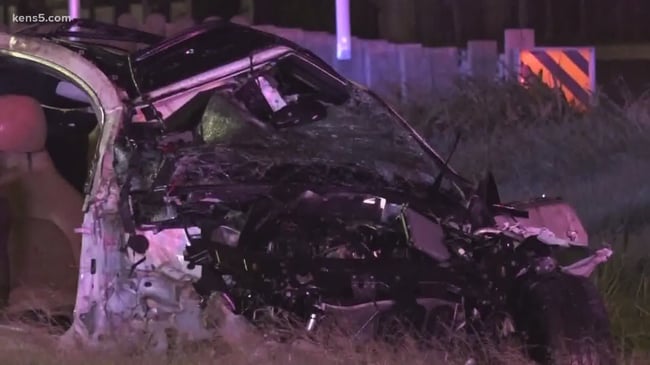Scura, Wigfield, Heyer, Stevens & Cammarota Blog
- Blog
No Fault Personal Injury Protection (PIP) vs. At Fault Insurance Coverage in New Jersey
In New Jersey, understanding PIP coverage is essential, as it might be required to protect yourself when you need medical coverage. To illustrate how, consider this: the worst has happened: you are in a car accident. You need immediate medical attention. The first thought that races through your mind is that question you always ask when you’re hurt: will your insurance decline to cover your immediate injuries. The reality is that several of us are injured behind the wheel. We often do not understand the complex laws surrounding personal injury to fully understand your rights.
Most specifically, when dealing with Personal Injury Protection Coverage – or PIP – we do not know for sure how it can help us in the event of a worst-case scenario. You might have heard of No Fault or At Fault accidents. While on the outside these can sound drastically different, it might be hard to determine what damages can count as a No Fault claim as opposed to what an At Fault claim is.
All of these concepts might sound complicated, but in practice they are far more straight forward than you might believe. If you are unsure whether your insurance will cover you or if you have to fight for damages, let us shed light on both concepts, when both apply, and how to get the money you need to recover after an accident.
New Jersey No Fault Act

The No Fault Act, codified in N.J.S.A. 39:6A-1 to -35, established that, should a person require medical attention resulting from a car accident, that any PIP coverage will cover the medical bills for treatment resulting from the accident, regardless of who is at fault for the accident.
The No Fault Act applies whether you are the driver of a vehicle or the passenger of said vehicle. Standard Auto PIP policies need to provide immediate medical coverage to an individual caught in such a situation, attending to any injuries they may have acquired in the circumstances of the accident. If a passenger has their own Auto PIP coverage from their own PIP separate from the driver’s PIP, that comes into play.
PIP insurance coverage does not question who is at fault for the car collision, nor does it take into account the driver’s responsibility nor the responsibility of other cars in part or in full responsible for the accident. Costs of medical treatment are immediately covered.
To fully explain this concept, let us look at an example. You are driving through an intersection when another car runs the red light. You are just driving along when a drunk driver rams into your side. Glass buckles inward. The door shatters off its hinges. Your wheels skid as you spin figure-eights along the street, coming to a stop only when your car smashes against a stop sign. Your arm is shattered, but the driver, when he slammed into you, ended up breaking his femur.
Under the No Fault Act, both injured parties are covered by their own PIP Coverage. You each are treated and covered under your own individual plans. The other driver, even though he hit you, is not obligated to pay your medical treatment costs, nor are you ever responsible for his. No Fault or responsibility is assigned. However, the other driver will be responsible for the permanent nature of your injuries and pain and suffering as well as economic losses, other than the medical costs for your treatment. That other driver would also be responsible for any medical costs over your PIP coverage. For example, if your PIP coverage is $250,000 for medical costs and your direct medical costs are $350,000, your policy covers the first $250,000 and then the other driver is responsible for the extra $100,000 plus your permanence claims, pain and suffering and economic losses.
New Jersey At Fault Coverage

No Fault coverage is limited by its very nature, being hyper focused on the immediate medical care and costs for injuries directly resulting from the instance of impact. However, these are not the only damages that can be inflicted by a car accident. Some car accidents cause injured persons permanent injuries. Physical therapy might be required. Damages to the vehicle will need to be reimbursed. Trauma and emotional pain deserve to be compensated. No Fault coverage does not extend that far.
To be covered for long-term damages, property damage, physical pain and suffering, emotional damages, you will look to At Fault or liability coverage of the negligent driver. This is where you assign fault to a negligent party or parties, and they pay a proportion of the damages equal to their percentage of responsibility. New Jersey divides a percentage of fault upon all parties the Civil Court deems responsible for the injuries.
From here, you will have to prove the negligent party used less than reasonable care while driving, then collect what you are entitled to collect from there. To continue the example mentioned earlier, after recovering from your immediate medical costs after the intersection collision, the responsibly negligent party must pay for your harms and losses beyond the direct medical costs covered by your PIP coverage. At this point, you need to file for personal injuries for the other person’s insurance to cover your claims, making it so the responsible party pays for what they owe you.
It is important to remember that you deserve to be compensated for your injuries. Keep in mind that most of the time insurance covers the claim or at least a portion of your claim. Therefore, you are entitled to any damages equivalent to the harms and losses you suffered.

Speak to a New Jersey Attorney to Explain your No Fault/At Fault Rights

Of course, for some, the difference between No Fault and At Fault should be explained by an attorney that understands the law in New Jersey. While long term vs short term damages might be easy to determine, some are not. What costs are covered under No Fault injuries, at what point do your hospital bills stop being covered purely by your own PIP?
The simple solution is to remember that coverage for the harms and losses of your injuries will probably fall under both No Fault and At Fault coverage. In order to protect yourself and your family you want to ensure you obtain a full recovery for any losses.
If you are fortunate for the other party to offer to cover damages done unto you, then you are lucky. However, not every negligent party or insurance company will offer fair value for your losses, choosing to shift out of taking the blame or avoid accepting responsibility for their own actions. If this happens, you still are entitled damages. You may have to prove the other party’s fault – such as gathering photo/video evidence, police reports at the scene, or other pieces of evidence.
This is when you must file a Personal Injury suit. Injuries of this nature require you to prove one party is at fault. Very often, insurance companies and negligent parties will try to shrug off the fault. While this might seem daunting, the at fault party is legally required to pay for your harms and losses, which means they owe you money that they are legally required to pay.
However, in order to recover fair value for your harms and losses, you will need Personal Injury lawyers whom you can trust. That’s where we come in. The attorneys at Scura, Wigfield, Heyer, Stevens Cammarota LLP can help. Please call our offices to schedule a free consultation and hear your options.
Share Article
Need Help? Contact Us Today!





Lists by Topic
- Bankruptcy (319)
- Personal Injury (92)
- Chapter 13 (52)
- Chapter 7 (50)
- Debt Management (50)
- Foreclosure (47)
- Accident (30)
- Car Accident (26)
- Chapter 11 (24)
- Business Bankruptcy (19)
- Credit (18)
- Insurance Claims (16)
- Business Law (12)
- Litigation (12)
- Employment Law (11)
- Probate and Estate Law (11)
- Damages (10)
- Medical (10)
- Product Liability (10)
- Workers Compensation (10)
- Attorney (9)
- Consumer Bankruptcy (9)
- Commercial & Residential Real Estate (6)
- Slip and Fall (6)
- Contracts (5)
- Premises Liability (5)
- Repossession (5)
- wrongful death (5)
- Video | Bankruptcy (4)
- Bankruptcy Cost (3)
- Corporate Litigation (3)
- Trial Law (2)
- student loans (2)
- tax (2)
- Attorney Fees (1)
- COVID-19 (1)
- Certified Civil Trial (1)
- Dog Bites (1)
- News (1)
- Relocation Assistance (1)

